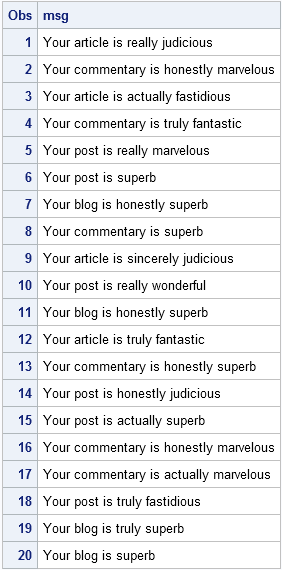
A common task in SAS programming is to specify a list of variables that satisfy some pattern. You can specify lists for the KEEP= or DROP= data set options, and you can use lists of variables on many SAS statements such as the VAR and MODEL statements. Although SAS has



